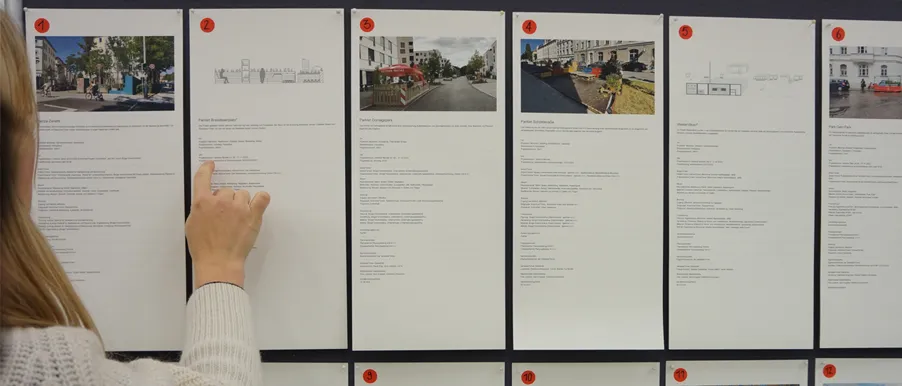Research by Design
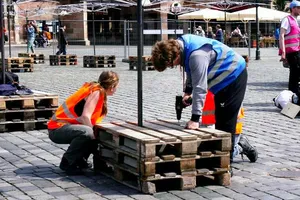
The Chair of Landscape Architecture and Public Space explores scientific questions and theses with constructional experiments in public space. Real existing places become laboratories in which design questions can be tested on a 1-to-1 scale.
Archive Research

The Chair hosts several archives of well-known architects, landscape architects and garden designers. Through this access to original written documents, photo and plan collections as well as monographs and professional journals, the archival research makes a valuable contribution to the reappraisal of the history and development of the profession. The archive records cover the pre-war period, the National Socialist period and the post-war period up to the 1990s.
Quantification
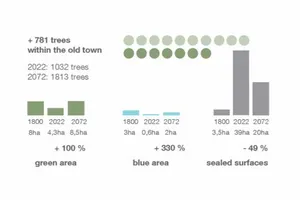
By identifying and specifying ecological parameters, it is ensured that important concerns in open space planning are included as essential elements in the planning of cities and urban districts. Existing quantification methods such as the "biotope area factor" or the "green plot ratio", which are already known in the professional world, are examined and new forms of quantification are developed, which focus on their application in public space.
Test Designs
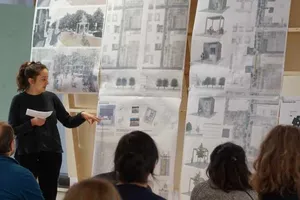
Designs anticipate the coming reality. Each draft thus expands our knowledge of the future and shows creative solutions for existing or future issues. From the compilation of alternative designs for the same scenario, concrete overarching approaches can be clustered. Through systematic processing, knowledge is salvaged from the drafts being created at the chair.
Real Life Mappings
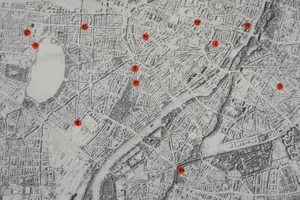
Public space is often ephemeral and difficult to capture. The chair documents phenomena of public space in the form of mappings that cover both the built situation in the space and the organisational and planning backgrounds. Particular attention is paid to understanding and evaluating the planning and spatial relevance of temporary projects.
Actionistic Research
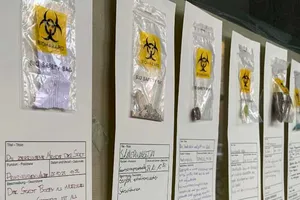
The Chair of Landscape Architecture and Public Space uses the term "actionist research" to describe research methods in which the place of analysis is opened up through one's own action. Method and term are inspired by artistic forms of work of the action art of the 20th century.
